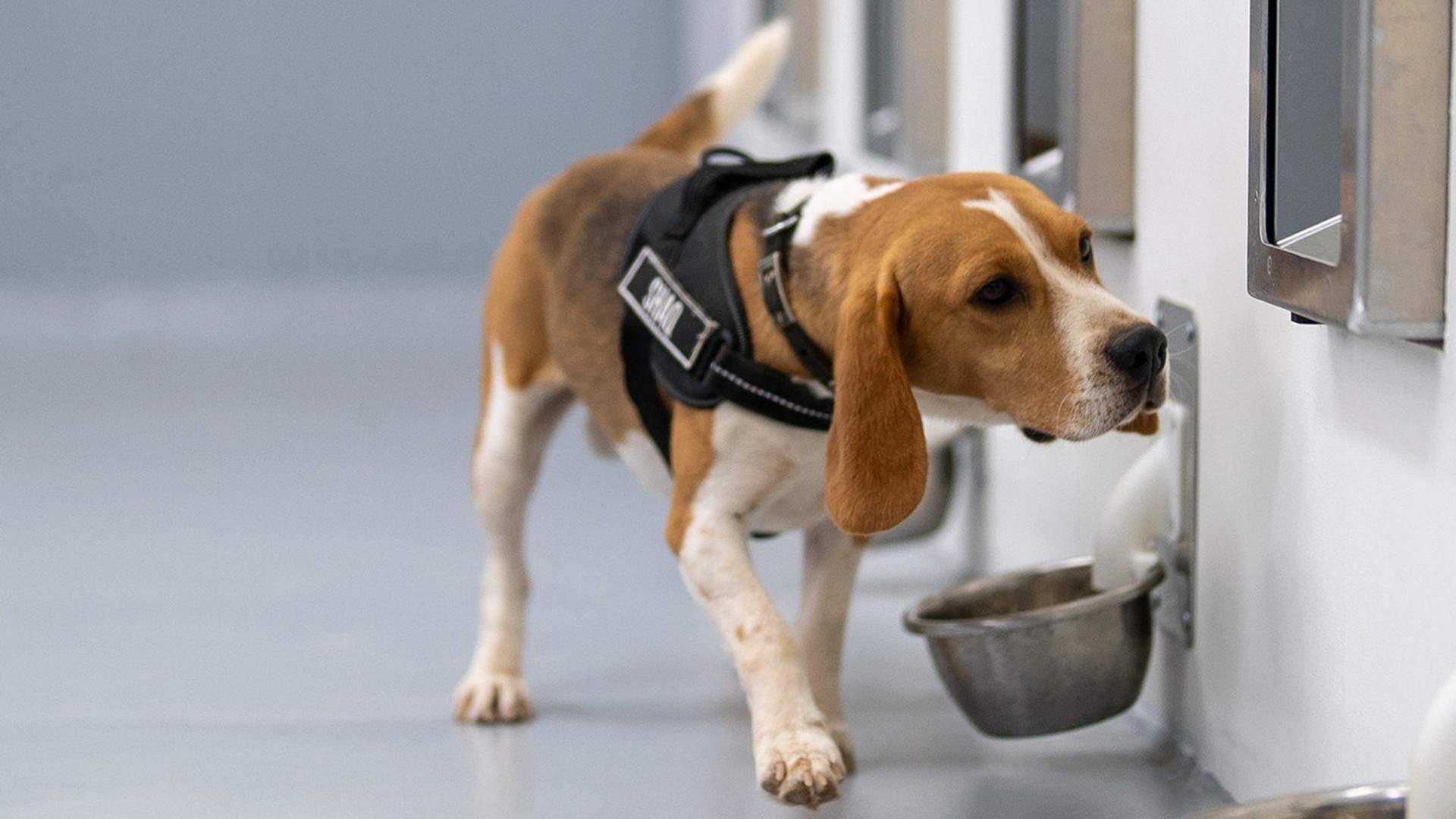- Статьи
- Science and technology
- Scholarly material: the tandem of AI and dog and how humans learned to run
Scholarly material: the tandem of AI and dog and how humans learned to run

Israeli scientists have proposed a new method of diagnosing cancer, in which they have combined the capabilities of a dog and artificial intelligence. Specialists from the USA have found out that modern man owes his ability to run fast over long distances to mutations in the Achilles tendon. And Skoltech employees have discovered a new type of bacteriophages that are able to destroy even those strains of Escherichia coli, which have developed a defense against these microorganisms. About these and other most interesting news of science read in the material "Izvestia".
Pseudo-satellites will distribute the Internet in remote villages
In Russia began to create the first domestic pseudo-satellite. This is a class of drones that are designed to work for a long time at high altitudes. The project is implemented by a domestic startup team that specializes in space technologies.
As explained by the developers, pseudo-satellites are systems that are similar in their tasks to the vehicles operating in Earth orbits, but they are launched much lower - in the stratosphere - at an altitude of about 18-25 kilometers. Therefore, the cost of their launch and operation is several orders of magnitude lower than that of spacecraft. However, the area that stratospheric vehicles provide coverage is much smaller than that of satellites.
- The development is an unmanned aircraft of the airplane type. It is designed to fly non-stop for a month or more. The pseudo-satellite is equipped with four electric motors that utilize solar energy. Solar batteries are installed on the upper surface of the wing, due to which the drone in flight will store energy during the day and spend it at night," Nicholas Oxman, head of the project and executive director of Stratolink, told Izvestia.
3D-bioprinting will help treat periodontitis and jaw injuries
Specialists of the Institute of Stomatology named after E.V. Borovsky and the Institute of Stomatology named after E.V. Borovsky. E.V. Borovsky Institute of Dentistry and the Institute of Regenerative Medicine at Sechenov University have developed a new technique for repairing periodontal injuries - a set of soft and hard tissues surrounding teeth and ensuring their attachment to the bone. These include gums, root cement, connective and other types of tissues. Scientists have created a technology to produce a bioequivalent of the destroyed area based on the patient's own cells, biocompatible polymers and spheroids (three-dimensional cellular structures) using 3D-bioprinting. This tissue-engineered construct is fully compatible with the patient's body.
- It is much more than just a transplant - it is a living tissue, related to the patient's body, as it is grown from the patient's own cells. So far, this approach has not been realized anywhere in the world. It will be suitable for restoration of periodontium damaged due to various diseases, and for closing post-traumatic and postoperative defects, - said Svetlana Repina, a dentist, associate professor of the Department of Surgical Dentistry of Sechenov University.
Bacteriophage will destroy even protected E. coli
Skoltech scientists have identified a new type of virus-bacteriophage Sxt1. Its peculiarity is that it can effectively destroy not only the usual strains of E. coli, but also those variants of this microorganism that have protection against other types of viruses.
- This virus can infect not only laboratory E. coli, but also some of its natural forms that are resistant to most phages due to the peculiarities of the cell wall structure. This surprised us, as the closest relatives of Sxt1 are unable to overcome these barriers. We can assume that it will be better able to cope with infections as well," said Skoltech graduate student Polina Yarema.
AI has learned to diagnose cancer with the help of dogs
Specialists of the Israeli project SpotitEarly have combined the capabilities of a dog and artificial intelligence to diagnose cancer. Ithas long been known that some animals can use their sense of smell to sense signs of cancer. The problem is that a dog is able to signal to a human that it has smelled something, but it can't transmit more detailed information. Scientists used AI to analyze the Labrador's response to breath odors from patients with different types of cancer. Out of 261 patients with this diagnosis, the tandem of pet and computer identified 245 during the study. According to the researchers, this approach allows to diagnose the disease much earlier than existing methods can do.
- Most importantly, the technique worked just as well in the early stages of cancer as it did in the later stages. This is crucial, as early diagnosis can increase survival rates for this pathology," said SpotitEarly Chief Technology Officer Asaf Rabinovich.
Running faster than humans was taught by evolution
American scientists have built a computer model of the skeleton of Afar Australopithecus australopithecus, which lived more than 3 million years ago. Specialists compared it with the structure of modern man. It turned out that although these ancient relatives of humans and moved on two legs, but did it much slower. Mutations in the Achilles tendon allowed Homo sapiens to expend energy while running much more efficiently.
- The analysis gives us a detailed picture of the running speed of ancient human relatives and the muscle adaptations that allowed modern humans to run long distances," said Herman Pontzer, an evolutionary anthropologist at Duke University in Durham.
The structure of its skeleton makes Afar Australopithecus australopithecus very well suited for studying the evolution of erectness in the human lineage, the researchers added.
Переведено сервисом «Яндекс Переводчик»







